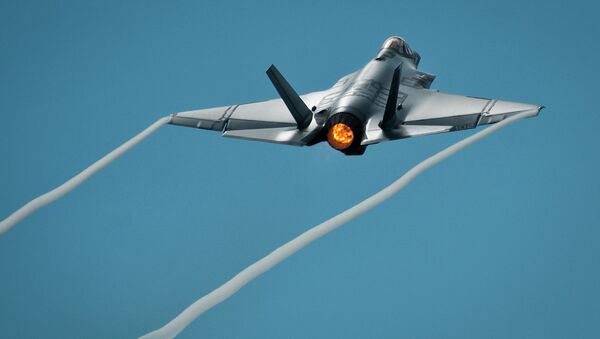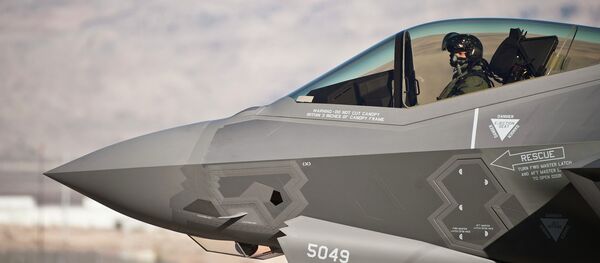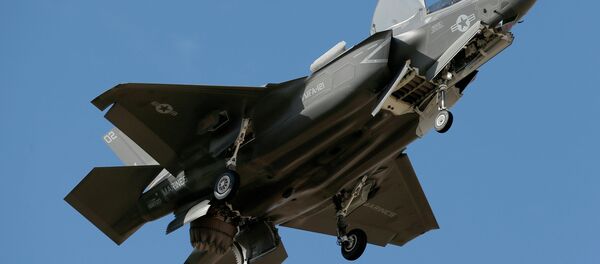The Government Accountability Office (GAO) said the Pratt & Whitney F135 engines are so unreliable at this point that it could cause further delays in what is already the US military's most expensive program.
"Program data show that the reliability of the engine is very poor (less than half of where it should be) and has limited the program’s progress toward its overall reliability targets," said the GAO report from earlier this month on the F-35 program's "Affordability Challenges."
The complex Marine Corps' version of the F-35 was, as of December, flying 47 hours on average between engine failures, instead of the 90 hours expected by this point in the development process, GAO officials said. Air Force and Navy models' engines flew about 25 hours instead of a projected 120.
The design changes and retrofits to already-produced jets — along with a slew of other problems, like flawed software systems — means the Pentagon's “procurement plan may not be affordable,” the report suggests.
At this point the Pentagon has planned to spend nearly $400 billion on 2,443 planes — three variations of which will be produced for the Air Force, the Marines and the Navy. Estimates are that, with maintenance costs down the road, the program could top $1 trillion.
Meanwhile, a report from the Defense Department's Inspector General found "61 nonconformities" during its quality assurance inspection, and called for more oversight of the program and new quality goals established with Pratt & Whitney.
— DoD InspectorGeneral (@DoD_IG) April 27, 2015
Changes are in the Pipeline, but Remain Untested
The GAO analyzed flight data provided by Pratt & Whitney to come to their conclusions about the engines' reliability, though the engine makers themselves say the watchdog made mistakes in its analysis.
The GAO "incorrectly assessed engine reliability, as it did not account for new designs that have been validated and are being incorporated," Matthew Bates, a spokesman for Pratt & Whitney, told Bloomberg News in an email.
The engine version for the Marine Corps "is at 71 percent of where it is expected to be" Bates said, while the Air Force model’s engine is a head of schedule, "at 147 percent of where it is expected at this point."
Michael Sullivan, a GAO director for acquisition, recognized that there were agreed upon changes being implemented but that those changes "have not yet been demonstrated through flight testing."
The GAO report also doubted that these latest reliability issues would be the last in a program that's been plagued with delays since the Pentagon started development in 2001.
"With nearly 2 years and 40 percent of developmental testing to go, more technical problems are likely," the report predicted. Addressing new problems and improving engine reliability may require additional design changes and retrofits."
Ballooning Budgets and Costly Retrofits
The reports were released as Congress considers the Pentagon's request for $1.2 billion to buy engines next year, with annual funding projected to rise to $2 billion by 2020.
The program has already nearly doubled its original budget to $400 billion in spending — making it the most expensive plane in history.
Among the admissions at the most recent congressional hearing on April 14 were that the F-35’s much-touted software system for monitoring maintenance was indicating false positives 80% of the time when being used to check on the fitness of the jets.
In another blow to the program's reputation, the Defense Department's director of operational testing, Michael Gilmore, testified that the F-35 would never be able to provide the kind of support for ground troops that the already 40-year-old A-10s deliver. Gilmore cited "digital communications deficiencies" as well as faults in the F-35's threat detection systems.
The revelations about the latest round of changes needed for the Pratt & Whitney engines also highlights the much-criticized decision to rush the planes into production before design was even completed, meaning the military has spent billions on fixing already produced aircraft that were faulty.
"This will make a headline if I say it, but I'm going to say it anyway," Frank Kendall, a top Pentagon official, said in 2012. "Putting the F-35 into production years before the first test flight was acquisition malpractice. It should not have been done."





